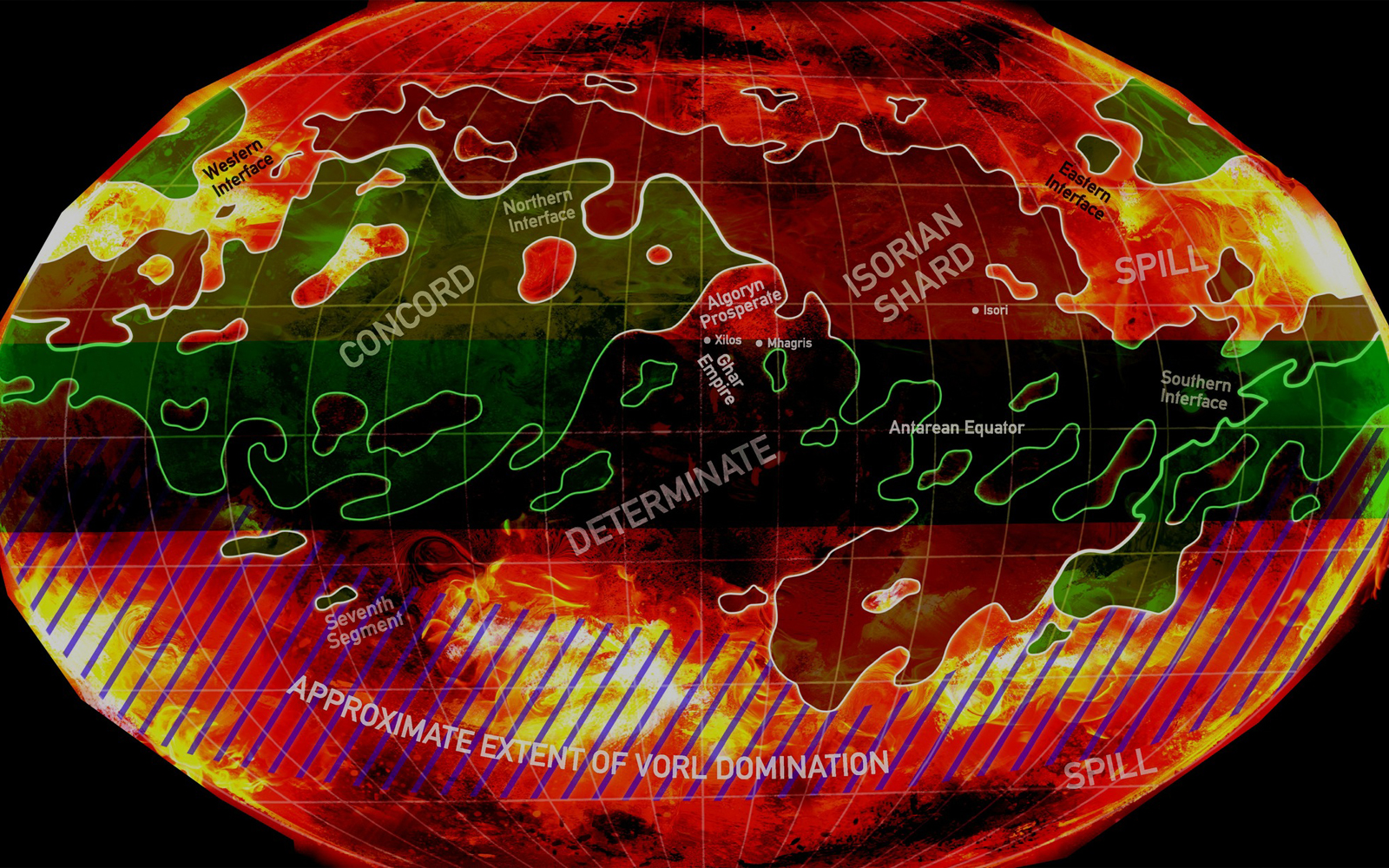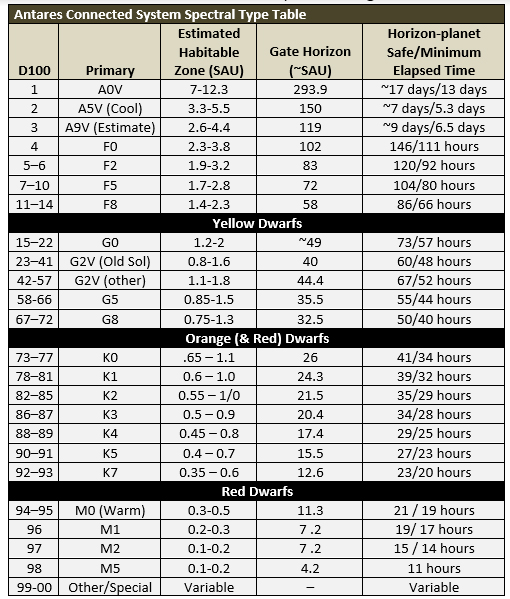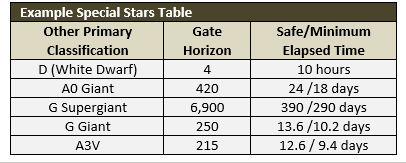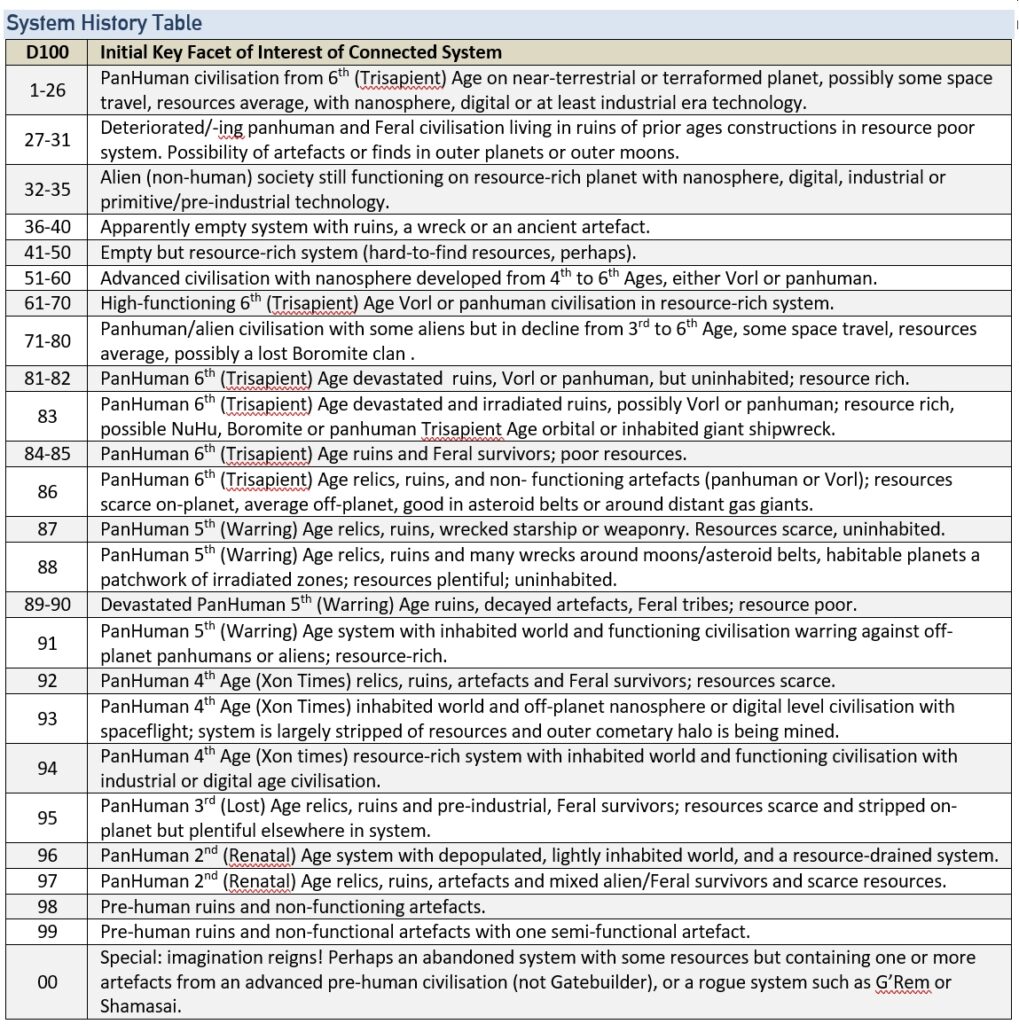Previously, we outlined how Antareans produce simple, but usable, maps that can be understood by humans – the icohex/shardhex system – and ran over some simple tables that located gates in those subhexes, gave gate transition times and a process for allocating systems to factions. This time we give a way of adding a little more detail: how far is the gate horizon from the inner planets and from when did the system first appear?
This gives most of the details we might want to have generated that are specific for Antares. There are plenty of other details we might like, such as how many planets and moons the system has, but these are not necessarily specific to Antares except in one respect: all gates lead to a system of interest.
Gate Horizon
Quite how Antares always connects to a system of interest is not known. The Isorians and those of the NuXon and Alzanthan alliances in previous ages all theorised that Antares had a sensory apparatus within stars – either the suns of those systems it connected to or nearby stars that could monitor a swathe of stars. As mentioned in a previous article, what Antares considers ‘of interest’ is interesting in its own right: sophont-level civilisations; rich resources; ancient artefacts, whether high-tech or awe-inspiring; the ruins of previous civilisations.
We’ll discuss other impacts of this ‘interest’ when we look at the history of a system behind a newly-connected gate. For now, though, it is worth bearing in mind that it also governs the type of star systems to which Antares creates a gate and, as a result, the gate horizon – how far away from the dominant star (or stars, normally one) the gate is located.
On Antares, a gate to the Antarean trans-dimensional tunnel is fairly randomly on or near the surface of the giant star-machine, and we gave a system for calculating its depth in the third instalment of this series of articles. The system-side terminus of the gate is a slightly different matter: a gate always opens at a distance from the dominant star related to its stellar output, the gate/nexus-creation machine on Xilos causing an understandable exception! We can roughly approximate its stellar output to a stars bolometric luminosity.
The majority of stars to which Antares connects support the creation of rocky planets in a zone that supports life roughly similar to that of panhumanity, or allows for the creation of large, potentially habitable moons around a major gas giant. A huge number of such planets and moons are already capable of supporting life and those that do not are capable of doing so with not-too-extreme terraforming. Indeed, it appears that many of the planets were terraformed in the past, either by humans or by previous, long-lost civilisations.
This is key as it leads to several key factors, the first of which is the stars to which Antares connects are generally in the habitable bands for humans, generally F, G and K-type stars or even the extreme ends of A and M class stars and tend strongly to be main sequence stars. The second major consideration is one that is surrounded by speculation: perhaps the Gatebuilders were, most likely, of a species that can thrive or which evolved on Old Earth-like worlds. The counter to this is the suggestion that the network merely adapts to the most likely form of life in the galaxy at any given time. Whatever the case, despite the majority of stars in the universe being red dwarfs (typically class M stars), they are underrepresented when looked at from the perspective of Antares connections.
Given the bias in connected stellar types, and knowing the – albeit rough – output of such stars, it enables us to create a table that lists the most likely stars, their gate horizons and, as a result, the average time it would take a 7th Age ship to reach an inner planet (thanks to David Horobin and his astrophysics knowledge for checking my maths, here 😊 ).
Lastly, a gate’s position on the gate horizon is more readily determined by the angle to the ecliptic at which the giant star Antares appears. The gate is always on a line drawn from the dominant star to where Antares appears to be. We provide a table to be used to determine this, but most of the time Antares appears at an angle between +/- 28.6° but tends to avoid angles too close to the system ecliptic.
Gate Angle to the Ecliptic
To determine the gates angle, we give some suggestions for generating the value randomly using Antares dice. First roll a D10 to determine the positive or negative declination – evens positive, odds negative, perhaps. Then roll D100 to determine the absolute value. We give a hint in the third column as to what dice could be used to calculate the exact angle.
For example, if we first roll a D10 and get 7 – a negative value. We then a D100 and get a 82, a range within 12° to 21°. We could choose an value from this range (say +17°) but instead choose to roll a 3, giving a final declination of +14°.
Antarean Spectral Type/Gate Horizon Table
Unless a specific star is required, roll D100 and check the result in the following table. This will give the spectral type of the primary, a possible habitable zone – Earth being 1 Standard Astronomical Unit (SAU) – and, most importantly, the gate horizon.
The table does not add some interesting restrictions that can be discovered elsewhere. For example, the brighter F-class stars often put out a great deal more UV light which, it is theorised, might either cause too many mutations so life never gets a chance to develop or which may cause an over-abundance of life inured to UV wavelengths. In either case, panhumans on such planets would need genome adaptations to resist the perils of excessive UV – much like the Algoryn. Other stars may vary, such as the A0 stars, and we do not include giants in the table, leaving them as example ‘specials’. The gate horizon then gives us the travel times. The main governor for in-system travel is the ‘safe velocity’ – the velocity at which a ship can travel without overly damaging its shields. The time given in the table should be used for high-quality Isorian, Freeborn and Concord civilian ships (if Freeborn ships can ever be classed as civilian). Military vessels of the Freeborn and Concord have travel times around 5% shorter and Isorian ships, scouts and survey vessels reducing this by up to 10%. Ghar ships typically take around twice this time whilst mercantile, the more advanced Spill nations, Boromite and Algoryn ships take around 15-25% longer, depending on how far the Gate Horizon is from the central star. Ships of the less advanced Spill nations (Retrograde Spill ships) might well take weeks or months to travel to an inner planet from a gate horizon – or years in the case of 21st century Sol!
The impact of in-system travel in the Seventh – IMTel – Age is that few capital worlds and military installations will be built in systems with excessive travel time to a densely-populated inner planet. This tends to leave most capitals around G and K class stars and a travel time of 3 days or less. Of course, a major military installation could be built in a permanent, artificial structure such as an orbital habitat based near the gate. It is not uncommon for the home ships of bigger Freeborn houses to grow too big to travel through gates, effectively making them into slightly-mobile orbitals.
Where a few examples of a given spectral type are given, as in F0, F2, F5, etc, intermediate brightness stars can have their properties estimated from the data given. The gate horizon is slightly closer for ‘colder’ stars – those with less output – and slightly further out for ‘warmer’ stars. We should add that the data on which this table is derived is subject to change as new discoveries are made frequently!
As an example of special stars we give the following, but players are encouraged to make up their own, including binary systems and such.
History – What is of Interest?
Having set the gate horizon, we need to find out what was of interest in the system when it was first connected during the 7th Age. We can either choose or roll from the table below or make one up. It is worth bearing in mind that a major system is likely to already have been host to a significant population; as a result, ignore ruins in such major systems, especially in capitals or those with a military centres.
Where panhumans are mentioned, the planets they occupy are either near-terrestrial and in orbit around the primary, or may be on a terraformed world that orbits the primary or a gas giant.
Summary
That’s it for now! We now have a way of mapping the gate locations around Antares, determining their transit times, travel times, general background and political allegiance. We have some sample shardhexes and blank shardhexes for players to locate their own games.
The details of each system can be mapped out or generated using imagination or one of the many system generators available that are often used for roleplaying games (RPGs). One I am particularly fond of is Donjon’s star system generator (https://donjon.bin.sh/scifi/system/) but which I then tailor to match the unique requirements of Antares!










